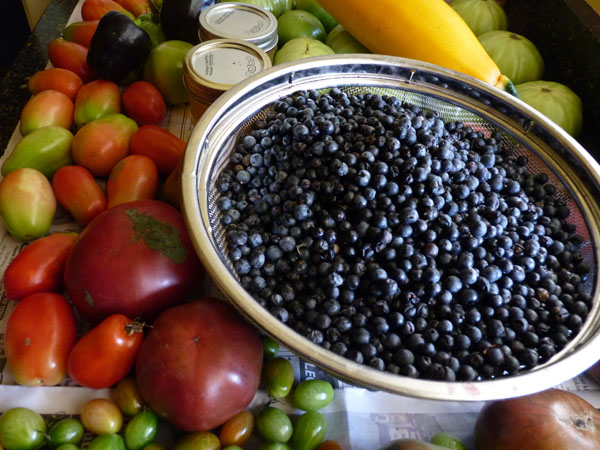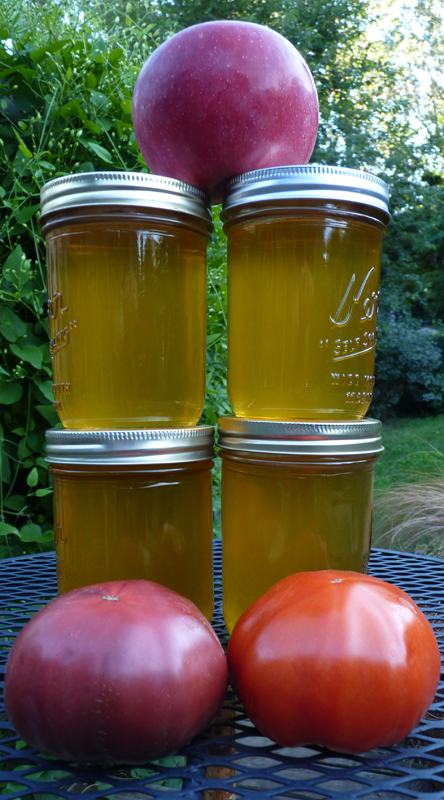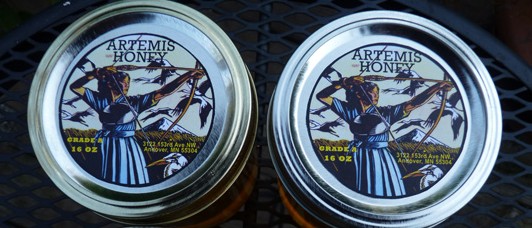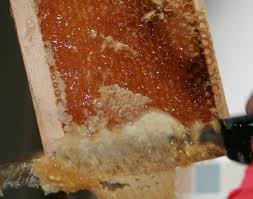Fall Full Autumn Moon
Our revels now have ended. The very last of the year’s harvest, four-foot long decorative squash and birdhouse style gourds, Kate brought in yesterday. 
The bees are done for the year. Two colonies will die over the winter and the third, with luck, will survive. Even if it does, this is my last year for overwintering colonies. The part-time, small quantity operation we have here doesn’t justify the extra work of mite treatments, concern over various ailments only caught by colonies that survive from one year to the next and the inhibited production of the colony developing as a parent colony.
Artemis Hives now has two honey harvests under its belt in this, the third year of bee-keeping  here. Kate and I have developed a work flow. She takes care of wooden ware, uncapping frames and bottling while I put foundations into the frames, manage the colonies, remove the honey supers and bring them to the house and insert them in the extractor.
here. Kate and I have developed a work flow. She takes care of wooden ware, uncapping frames and bottling while I put foundations into the frames, manage the colonies, remove the honey supers and bring them to the house and insert them in the extractor.
Three hives, or even two, will make honey enough for us and our friends. The process is more straightforward after three seasons, now heading into the fourth. The bees have become part of our life here, like the perennials, the vegetables, the orchard and the dogs before them.
We also have the beginning of a label collection with 2010 and 2011 labels designed and produced by Woolly Mammoth Mark Odegard.


